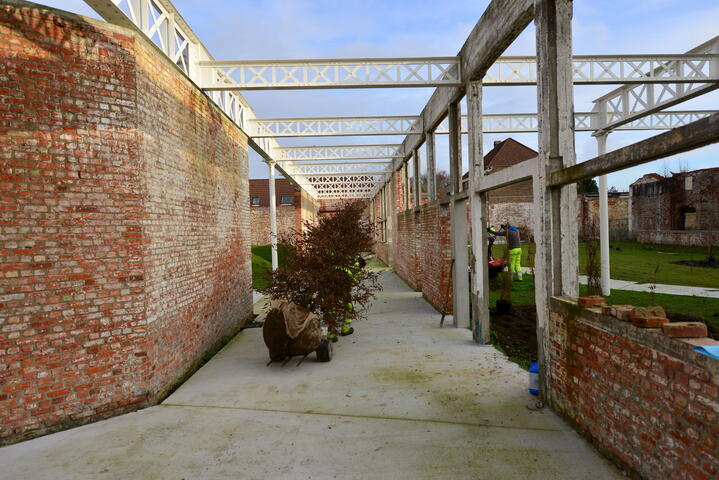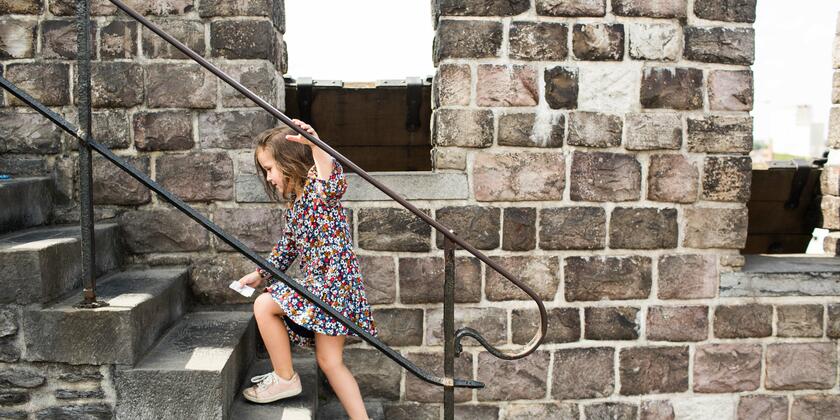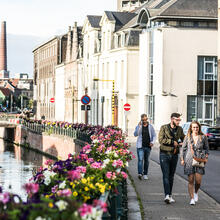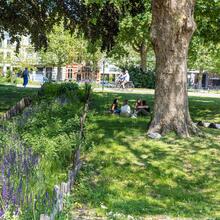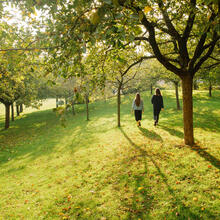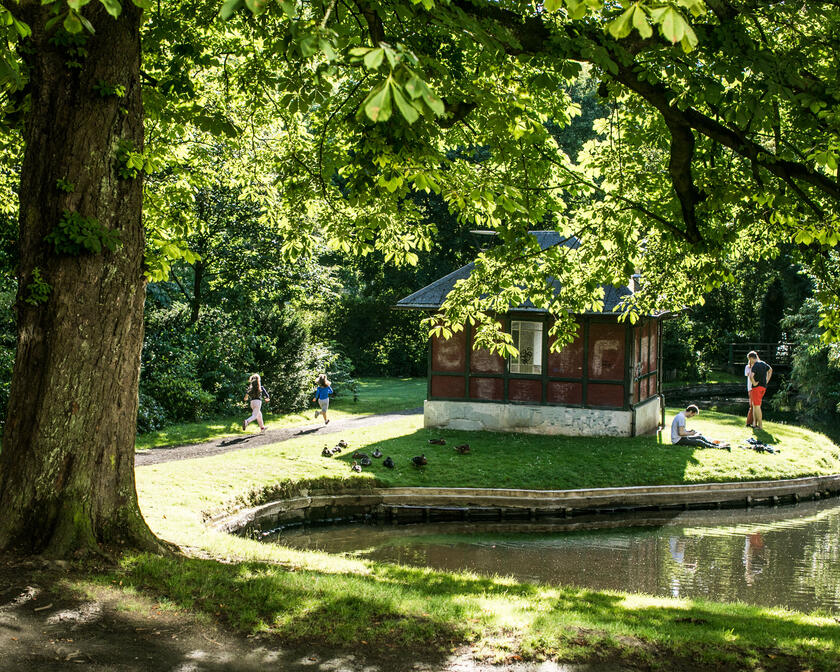
We will take you on a tour of Ghent’s third green axis. Starting in the historical city centre, you will follow a green route to one of the city’s most beautiful nature areas: Gentbrugse Meersen. The tour will end in one of Ghent’s most original neighbourhood parks: De Porre.
Swimming
We start our tour at Baudelopark, the beating heart of the Ghent Festivities. Enjoy the view of Portus Ganda. Roll down the green slope of Veermanplein square. The oldest swimming pool in Belgium, Van Eyck, is located nearby.
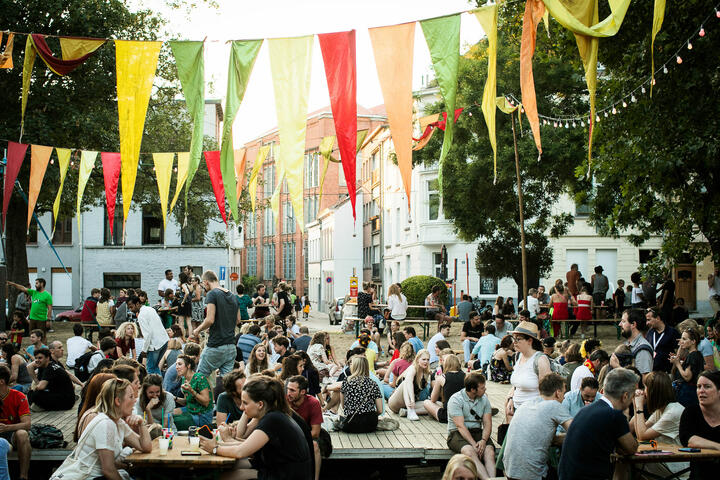
Beech trees
To relax after a swim, you can stroll between the beech trees on the site of the former St Bavo’s Abbey. The name of this park, Coyendanspark, refers to the age-old ”cow’s dance” celebration.

As hidden as an enclosed courtyard
Hidden from sight, Rommelwaterpark was laid out in 1997 on the site of Rietgrachtbeluik, an enclosed courtyard surrounded by working-class houses. Today, only the monumental gateway on Kasteellaan reminds us of this bit of social history.
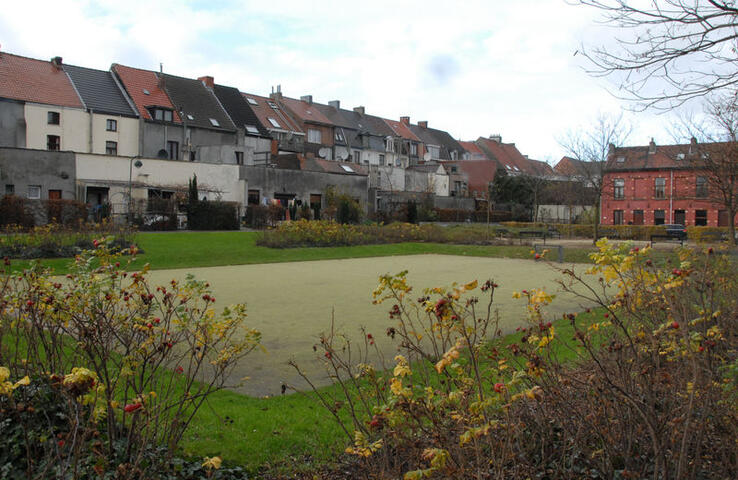
Former printing office
Ferdinand Lousbergpark is located on the site of the former Het Volk printing office and Lousbergstehuis retirement home. The park connects various residential areas and is an oasis of tranquility.
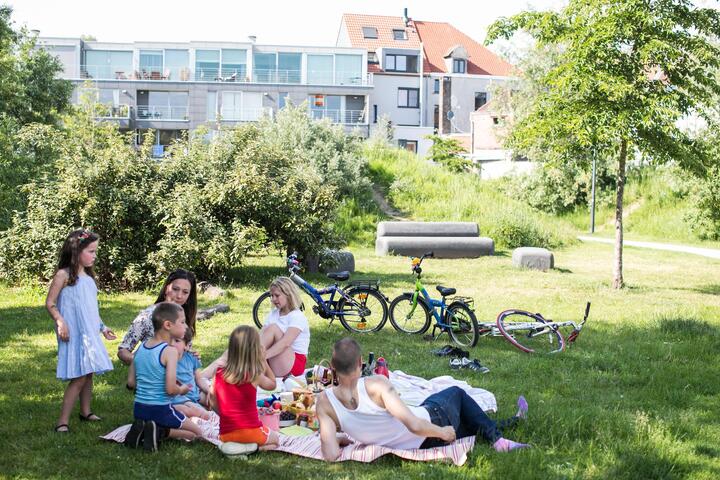
Pontoon
Keizerpark is connected to Visserij and Scheldekaai by means of two cycle bridges. The wooden pontoon along the river Scheldt can be used for fishing.
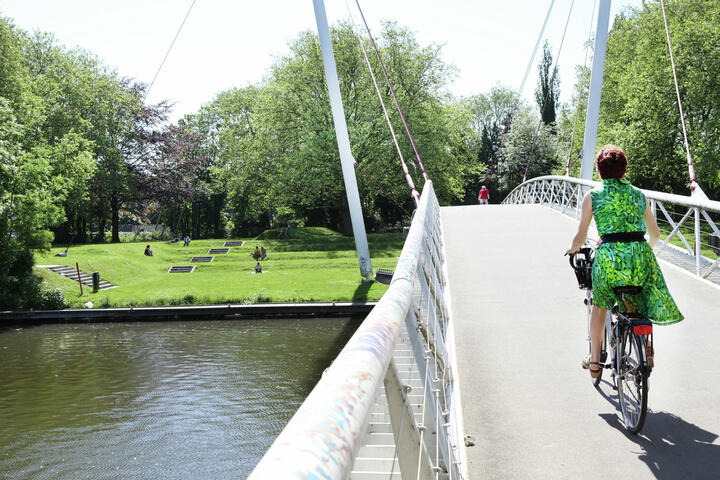
Meander
You are now walking along the old meander of the river Scheldt. The tidal marsh you see here is typical of tidal rivers.
Polluted industrial site
The park you are standing in is called Arbedpark Noord. Until 1993, there was a Trefil-Arbed plant here.
Castle
At Gentbruggekouter, you have a wonderful view of the meadows that form one of Ghent’s green lungs and of a small castle. Kasteel de Oude Kluis was originally a 12th-century fortress.
Ancient giant
This sweet chestnut is older than Belgium. Various associations (Stichting Wereldboom, Natuurpunt and Viadukaduk), local youth organisations and active residents want to protect this ancient giant by appointing tree managers.
Frans Tochpark or Braemkasteelpark
This park is named after the last mayor of Gentbrugge. Its alternative name, Braemkasteelpark, refers to the 14th-century castle that was restored and served as town hall until 1974.
After the scheduled transformation, the site will be renamed ‘De Felix’. This lively place is adjacent to the Jeugdhuis Asgaard youth centre and the DeVierdeZaal multifunctional hall.
Allotment gardens
De Meersen is a 4.5 hectare park with no fewer than 164 allotments, each with a surface area of 100 to 200 m². This is the place to be for people who have a green thumb!
The Gentbrugse Meersen green pole
This is one of Ghent’s four green poles. The city aims to provide everyone with a green pole within 5 km from their home and to have at least 100 m² of green poles per inhabitant. The city works together with the non-profit organisation Natuurpunt vzw to develop this green space.

Spinning and weaving mill
Valuable parts of the former spinning and weaving mill ‘De Porre’ have been integrated into this neighbourhood park. The cooling tower and steam turbine have been restored as landmarks. The restored factory walls give structure to the park. An orchard adds to the tranquillity and a pond completes this green oasis.
